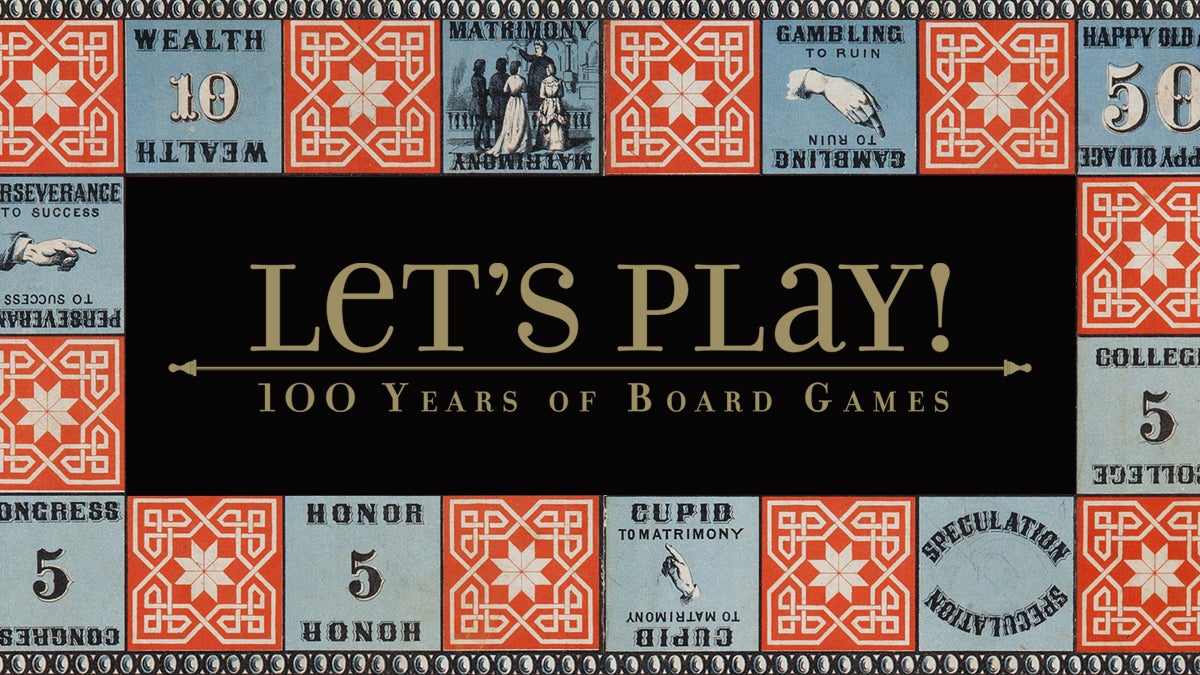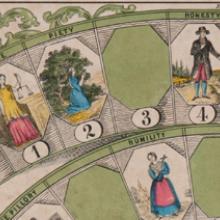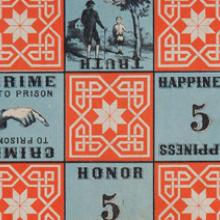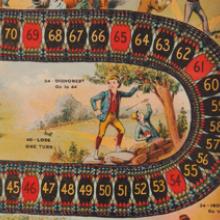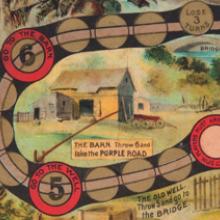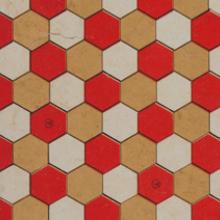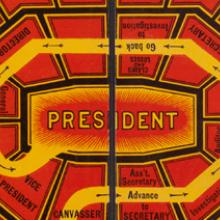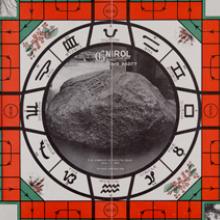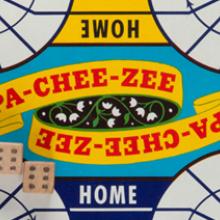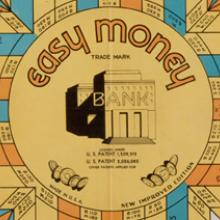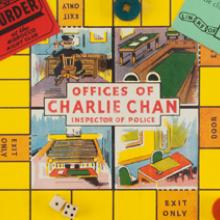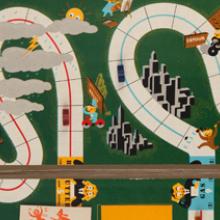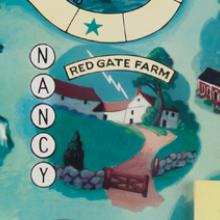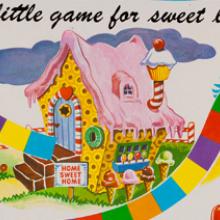Let’s Play! 100 Years of Board Games
Let’s Play! 100 Years of Board Games
The first mass-produced board games in the United States were imported from England in the 1820s. During the mid-1800s, the popularity of board games increased, and by the 1870s, advances in chromolithography, a color printing process, allowed them to be printed with bold, richly colored images at affordable prices. During these decades, Victorians spent much of their leisure time assembled in the home’s parlor playing games of all sorts. Many of today’s classic board games can be traced to games first introduced around this time period.
The games that entertained families mirrored the values, popular culture, current events, and literature of the era. Because Victorians esteemed virtue above all things, the goal of many games involved teaching moral lessons. Early games often had numbered spinning tops or teetotums instead of dice, because dice were viewed as immoral gambling devices. In 1843, W. & S. B. Ives of Salem, Massachusetts, first published The Mansion of Happiness, which was based on an earlier British model. The goal was to reach the seat of happiness in the center. It became one of the first widely successful, mass-produced board games in the United States. Players advanced by landing on spaces such as piety, honesty, and humility, and regressed when landing on vices such as cruelty, immodesty, and ingratitude. Other games produced in the late 1800s began to reflect the country’s shift from an agrarian society to a rapidly urbanizing and industrial nation. A rising interest in economics, travel, world’s fairs, leisure, sports, and children’s education led to a variety of games that featured these topics.
Even after the arrival of radio, movie theaters, and television, board games remained a popular pastime as the twentieth century progressed. During this era, board games promoting virtue disappeared, while games focusing on the accumulation of wealth proliferated. Monopoly made its official debut in 1935. The wildly successful game allowed people to acquire imaginary wealth when much of the population suffered from poverty. Other popular twentieth-century board game themes ranged from Hollywood, super heroes, and television to solving mysteries.
Although graphic design styles varied over the years, the game box’s eye-catching imagery has always remained an integral means of attracting players to games. This exhibition showcases a colorful assortment of nineteenth- and twentieth-century board games such as The Mansion of Happiness, The Checkered Game of Life, Pa-chee-zee: The Game of India, and the Nancy Drew Mystery Game.
This exhibition was made possible through a generous loan from David Galt, New York, New York; The Strong, Rochester, New York; and Mickey McGowan, San Rafael, California.
David Galt owns a large collection of antique and vintage games and playing cards, spanning three centuries. He designs games and is the inventor of Space Dominoes Card Game and Lucky 7 Double Dominoes.
The Strong® is a highly interactive, collections-based educational institution devoted to the study and exploration of play. It carries out this mission through five programmatic arms called “Play Partners,” one of which includes the National Museum of Play.
©2012 by San Francisco Airport Commission. All rights reserved.
